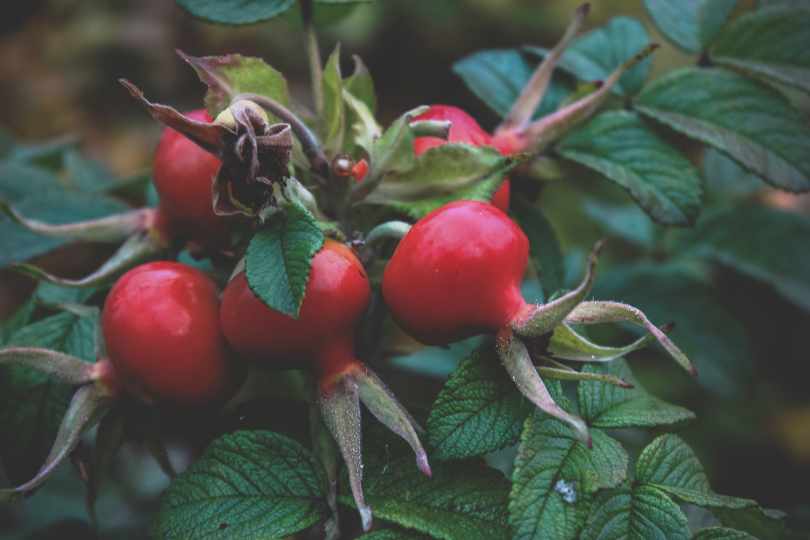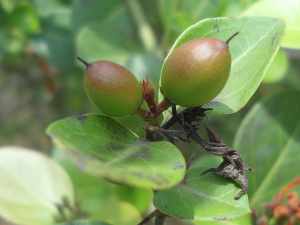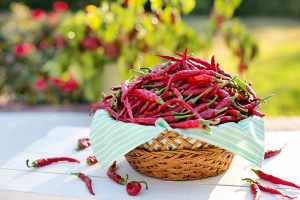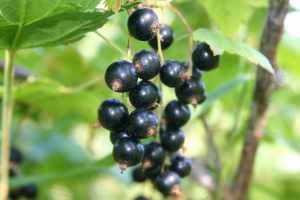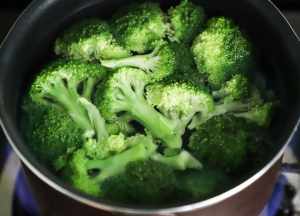Boosting our immune system has become a common concern worldwide. With the outbreak of COVID-19, keeping yourself strong and healthy is the only way to survive. And to do that, you need to supply yourself with all the vitamin C rich foods. It will boost up your immune system massively and keep you in good health overall. If you are confused about choosing the right foods rich in vitamin C, start scrolling down! Here we have made you a vitamin C fruits and vegetables chart to add to your diet today! Hang in there and give your immunity and health overall that vitamin C boost!
Table of Contents
Why is Vitamin C essential for you?
Before we tell you what the vitamin C fruits and vegetables chart, let us why you must include these foods into your diet.
Vitamin C is an essential nutrient that your body requires for its proper functioning. It is a water-soluble vitamin that is present in several fruits and vegetables.
The antioxidative power present in vitamin C can keep your immune system boosted. More so, it is essential to keep your skin healthy and supple.
Your body requires vitamin C for the well-being of small blood vessels, collagen synthesis, teeth, bones, and connective tissues.
You can not store or produce vitamin C. So, it becomes crucial for you to consume vitamin C rich foods to supply your body with this essential nutrient. Your body requires daily around 90 mg of vitamin C.
If you happen to be deficient in vitamin C, you may get symptoms like scurvy, anemia, slow wound healing capability, frequent infections, and bruising and bleeding gums.
Now you know vital it is to provide yourself with vitamin C. So, let us not waste any more time checking out what the vitamin C fruits and vegetables chart contains!
14 Vitamin C Fruits and Vegetables Chart
Now you know how essential it is for your body requires vitamin C. So, it becomes vital for you to choose the right foods rich in vitamin C. And to that, we are here with all the vitamin C rich foods.
So, let us see what the vitamin C fruits and vegetables chart contains:
Kakadu Plums
The scientific name for the Kakadu plum is Terminalia ferdinandiana. It is native to Australia and contains all the nutrients of a superfood.
The Kakadu plum contains more than double the amount of vitamin C present in oranges. Every 100 grams contains around 5300 mg of vitamin C. When you consume one plum, you get almost 481 mg that meets 530% of your daily body requirement.
The Kakadu plums are also a rich source of antioxidants lutein, potassium, and vitamin E. All these nutrients are potent for your eye and improve vision.
Acerola Cherries
The scientific name for acerola cherries is Malpighia emarginata. By consuming around have a cup of acerola cherries that is approximately 49 grams, you will be getting almost 822 mg of vitamin C. All of which meets 913% of your daily vitamin intake.
Several studies done on animals show that the acerola cherries contain cancer-fighting properties. It can protect your skin from UV damage and reduce any DNA damage in a poor diet.
However, the studies are only animal-based and lack hum evidence.
Rose Hips
Amongst the vitamin C fruits and vegetables chart, the rose hips are a must inclusion. They are sweet, tangy, and small fruits that appear on a rose plant. The vitamin C content in rose hips is massive.
If you consume six rose hips, you are supplying your body with 119 mg of vitamin C. It is equivalent to 132% of your daily vitamin C intake.
You already know that your body requires vitamin C for the synthesis of collagen. So, if you include rose hips into your diet, you are sure to increase your skin elasticity and stop premature aging.
Chili Peppers
When you are consuming a vitamin C fruits and vegetables chart, it is unfair not to include chili peppers into the list.
Each green chili possesses more than 109 mg of vitamin C that can meet up to 121% of your daily body requirement. On the other hand, red chili meets approximately 72% of your body intake.
Chili peppers are high in capsaicin. That is a compound that is responsible for the spicy taste you get in chilis. The combination of capsaicin curbs inflammation and pains too. Several pieces of evidence show that consuming 10 grams of red chili powder can boost up your fat-burning process.
Guavas
Guavas are a tropical fruit that is found in South America, Mexico, and Asia. It comes in white or pink flesh.
One guava will contain around 126 mg of vitamin C. That meets almost 140% of your daily vitamin C intake. More so, guavas contain a vital antioxidant known as lycopene.
A study was conducted on 45 healthy young people for six weeks. It was seen that by consuming 400 grams of guava peeled a day, the participants had a significant decrease in cholesterol and blood pressure levels.
Sweet Yellow Peppers
Another vegetable among the highest vitamin C foods is bell peppers. The vitamin C content in sweet peppers usually increases when they begin to mature.
When you consume half a cup of yellow peppers, you supply yourself with 137 mg of vitamin C. That meets almost 152% of the daily vitamin C intake. Also, yellow peppers contain more than double the amount of vitamin C present in green bell peppers.
Supplying yourself sufficiently with vitamin C is crucial to keep your eyes healthy. It can give you protection against cataract development too.
A study was done on 300 women participants who had a high intake of vitamin C. It was seen that participants had a lower risk of cataract by 33% in comparison to those who had a much lower vitamin C intake.
Blackcurrants
The scientific name for blackcurrants is Ribes nigrum. Only half a cup of blackcurrants has the potential to supply your body with 101 milligrams of vitamin C. All of which can meet around 112% of your daily vitamin C intake.
Blackcurrants also contain anthocyanins that are antioxidant flavonoids. The dark bluish-violet color seen in blackcurrants is because of the presence of these flavonoids.
Several studies show that your health can benefit when you supply your diet with anthocyanins and antioxidants. The benefits these nutrients provide are reduced oxidative damage that leads to chronic illnesses like neurodegenerative ailments, heart problems, and cancer.
Mustard Spinach
When you curate the vitamin C fruits and vegetables chart, you cannot miss out on mustard spinach.
By consuming one cup of mustard spinach chopped, you are providing yourself with 195 milligrams of vitamin C. All of which meet almost 217% of your daily vitamin C intake.
You should keep in mind that cooking can reduce the vitamin C content in the foods. But in mustard spinach, most of its vitamin C content remains intact. If you consume a cup of mustard spinach cooked, you are getting 117 milligrams of vitamin C. That is capable of meeting up to 130% of your daily vitamin C intake.
Mustard spinach is not only high in vitamin C but also contains other nutrients. Some of which are folate, fiber, manganese, calcium, potassium, and vitamin A.
Kale
You can never go wrong with greens. Kale being a cruciferous vegetable, is loaded with nutrients. It is among the highest vitamin C foods and rich in many more vital nutrients.
If you add a cup of kale uncooked into your salad, you are getting 80 milligrams of vitamin C. It meets 89% of your daily requirement for vitamin C intake.
Apart from vitamin C, your body gets carotenoids like zeaxanthin and lutein with loads of vitamin K.
If you consume kale in the cooked form, you are getting 53 milligrams of vitamin C from one cup. That is meeting around 59% of your daily vitamin C intake.
Though cooking reduces the vitamin C content in the foods, it increases its antioxidative power. If you steam, boil, or fry green leaves, the antioxidants get released. So, if you want to get more antioxidants, you know what you must do!
Kiwis
Kiwis are one of the vitamin C rich foods. One medium-sized kiwi contains almost 71 milligrams of vitamin C that meets 79% of your daily body requirement.
Several studies show that kiwis can lower cholesterol levels, improve immunity, and reduces oxidative stress.
A study was done on 30 people who were belonged to the age group of 20 to 51. It was done for 28 days and was given two to three kiwis regularly. It was seen by the end of the study that the participants had seen a reduction in blood platelet tenacity and triglycerides. The decline was seen by 18% and 15% respectively. It is seen that these effects can reduce the chances of strokes and blood clots tremendously.
Broccoli
Broccoli is one of the cruciferous vegetables that have lots of vitamins. When you consume half a cup of broccoli cooked, you will get almost 51 milligrams of vitamin C. It meets up to 57% of the daily vitamin C intake.
Several studies show that consuming vitamin C rich foods reduces oxidative stress, cancer, heart problems, and improves your immunity.
A study was done on 27 men who were heavy smokers for 10 days. They were given around 250 grams of broccoli steamed that supplied them with 146 milligrams of vitamin C every day. The results proved a reduction in the inflammatory marker C reactive protein by 48%.
Brussels Sprouts
As you are jotting the list of vitamin C fruits and vegetables chart, Brussel sprouts are a must-inclusion. By consuming only half a cup of brussels sprouts, you will get around 49 milligrams of vitamin C. It meets almost 54% of your daily vitamin C intake.
Like the other cruciferous vegetables, Brussels sprouts are rich in potassium, manganese, vitamin A, folate, vitamin K and fiber.
Vitamin K and C are crucial to keeping your bones healthy. Also, vitamin C can help in collagen formation that is a fibrous component present in bones.
Lemons
When are making a list of the highest vitamin C foods, how can lemons be out of the diet chart?
Lemons have been in use for centuries. Sailors were given lemons during the 1700s to curb the chances of scurvy. One raw lemon with its peels supplies you with 83 milligrams of vitamin C. It can meet up to 92% of your daily vitamin C intake.
Lemon juice contains vitamin C that acts as an antioxidant.
Interestingly, if you apply lemon juice to the cut vegetables and fruits, it does not turn brown. That is because the enzyme polyphenol oxidase gets brown when it is exposed to oxygen. So, lemon juice blocks the enzymes and prevents the cut veggies and fruits from browning.
Lychees
Lychees must make it to the vitamin C fruits and vegetables chart for the high vitamin C present.
When you eat one lychee, you are supplying yourself with 7 milligrams of vitamin C. It meets around 7.5% of the daily vitamin C requirement, and one cup of lychees provides you with 151%.
Apart from the presence of vitamin C, lychees possess omega-6 and omega-3 fatty acids. It keeps your blood vessels, brain, and heart-healthy.
Final Thoughts
As we bring you the end of the vitamin C fruits and vegetables chart, we are sure you will plan out your diet well.
Vitamin C is vital for the overall well-being of your body. It helps boost your immune system and keeps your heart, blood vessels, and other connective tissues in good health.
If you have a deficit of vitamin C, it may lead to other health hazards. So, it becomes vital to provide yourself with the correct vitamin C intake.
Another crucial role vitamin C plays is that it keeps boosting your immune system. So, with the ongoing pandemic of coronavirus, you need to keep yourself strong and healthy! And to do that, the highest vitamin C foods will help you!
